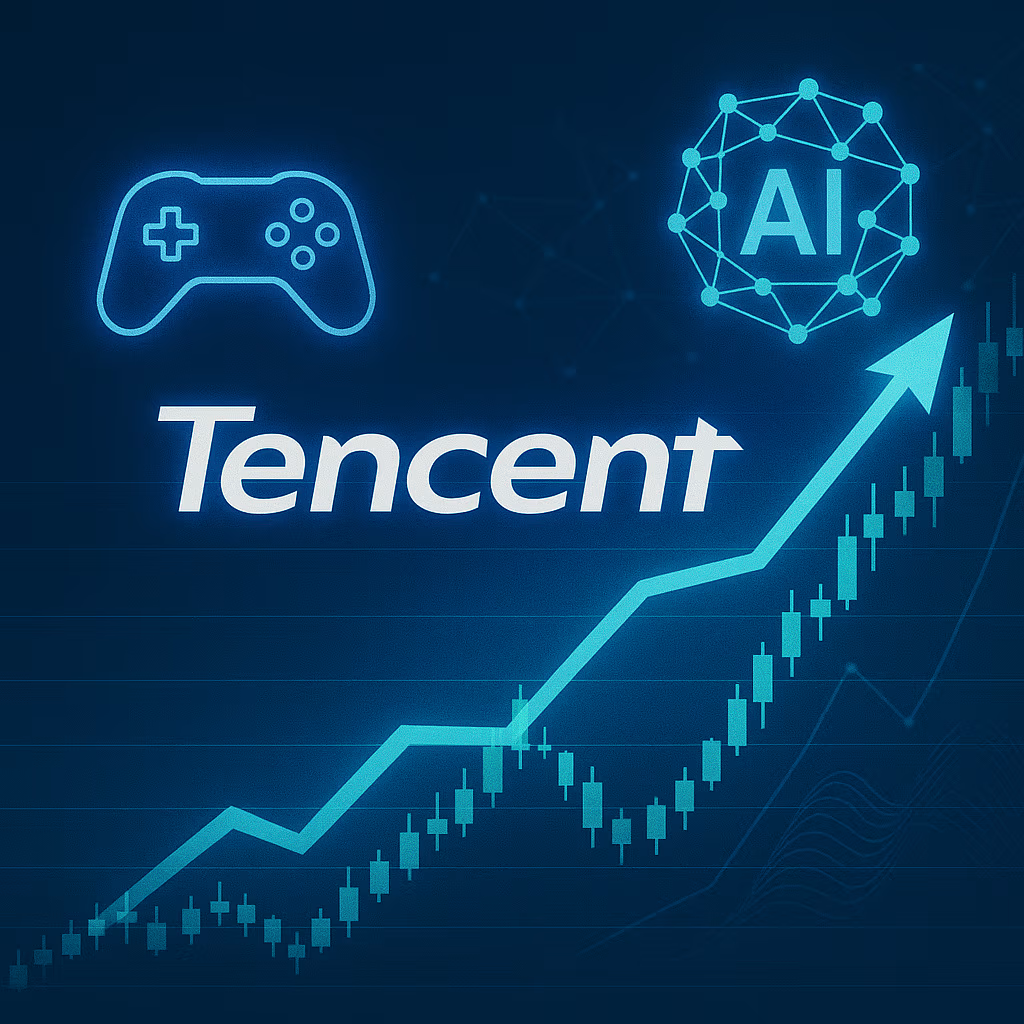Tencent’s latest quarterly report delivered a powerful surprise: strong top-line growth and robust profitability, driven by surging gaming revenue and strategic AI integration. In the wake of impressive results, analysts lifted price targets, now eyeing a potential 16% upside—a compelling signal that investor confidence in the tech giant is reigniting.
The company’s Q2 revenue grew 15% year-over-year to 184.5 billion yuan, exceeding forecasted figures. This growth was powered by strength in domestic and international gaming—up 17% and 35%, respectively—alongside a 20% rise in marketing services revenue, thanks to AI-enhanced advertising strategies. Net profit also beat expectations, reaffirming Tencent’s resilience and adaptability amid industry volatility.
Following the earnings beat, analysts responded swiftly. The consensus 12-month price target surged over 5% to HK$688, up from prior levels and representing a notable rebound. Given the current share price around HK$595, the analyst-implied upside of nearly 16% signals renewed investor optimism and market momentum.
Vital Growth Engines: Gaming and AI Advertising
Tencent’s gaming division has been the cornerstone of its rebound. Domestically, titles like Honor of Kings continued to perform, while international hits such as Dungeon & Fighter Mobile fueled rapid expansion overseas. These games tapped into Tencent’s deep ecosystem, leveraging user networks, localized marketing, and an agile content-release strategy.
On the advertising front, Tencent is capitalizing on advances in AI to refine targeting, optimize campaign performance, and deliver better ROI for clients. Brands increasingly rely on Tencent’s integrated capabilities—including social media, video platforms, and app ecosystems—to reach massive audiences with precision—a trend reflected in meaningful revenue gains.
Investor Sentiment Shifts
Analysts are framing this earnings beat as a pivotal moment. One noted that this was Tencent’s second-largest upward revision in five years. The signals align: AI investments are starting to generate returns, gaming shows sustained momentum, and macro tailwinds—including easing inflation and rate cut expectations—support broader market recovery.
The elevated price target indicates that analysts believe Tencent is entering a new phase of growth—not just recovering from past headwinds but building upward momentum. Expectations that gaming releases like Valorant Mobile could further drive engagement have added to the bullish narrative.
Strategic Capital Deployment and AI Innovation
Tencent is not resting on its laurels. The company continues to inject capital into AI capabilities, rolling out its own large language model and enhancing digital tools across platforms like WeChat. In 2024, Tencent’s capital expenditure reached 76.8 billion yuan, with Q2 alone accounting for 19.1 billion yuan, reflecting its commitment to infrastructure that underpins future growth.
This scale of investment is meant to drive both operational efficiency and user engagement—whether through smarter content recommendation, automation, or new product development. While upfront costs are substantial, they are part of a broader strategy to establish long-term competitive advantage in an increasingly AI-led marketplace.
Market Implications and Strategic Outlook
The analyst price target boost to reflect a 16% projected gain is notable for several reasons. First, it reflects real confidence—not speculative hype—in Tencent’s ability to continue executing. Second, it injects fresh momentum into Hong Kong-listed stocks, a market that has been under pressure from regional and global uncertainties.
For investors, the next key question is sustainability. Can Tencent maintain double-digit growth in gaming? Will AI-driven ad revenues continue to climb? Upcoming product releases and macro developments—including Chinese tech regulation and global economic trends—will influence whether the upside materializes.
Conclusion: A Tech Comeback in Motion
Tencent’s Q2 performance marks a clear tipping point. By outperforming across both core and emerging business lines, the company reasserts itself as a strategic growth engine in global tech. The 16% price target upside incentivizes renewed investor interest, while signaling that Tencent may be on its way to recapturing its former market vigor.
Ultimately, Tencent’s success hinges on its ability to sustain execution amid volatility, convert AI investment into consistent performance, and continue launching engaging gaming titles. For now, the signals are bullish, and the market is responding—raising expectations and spotlighting the next phase of the company’s evolution.





